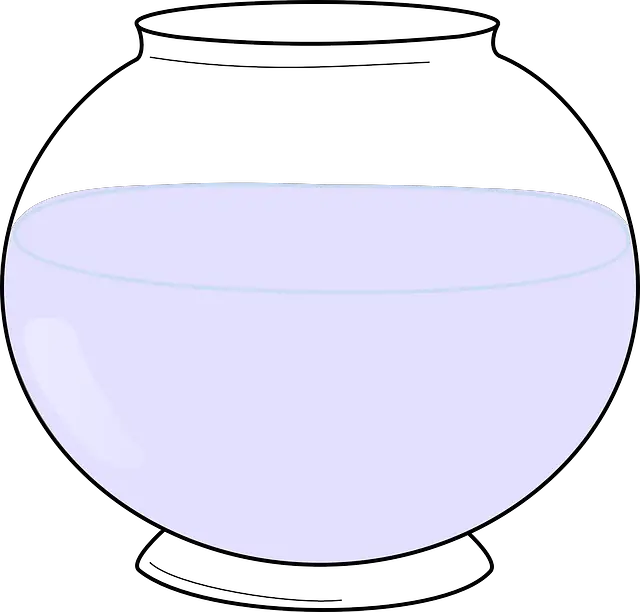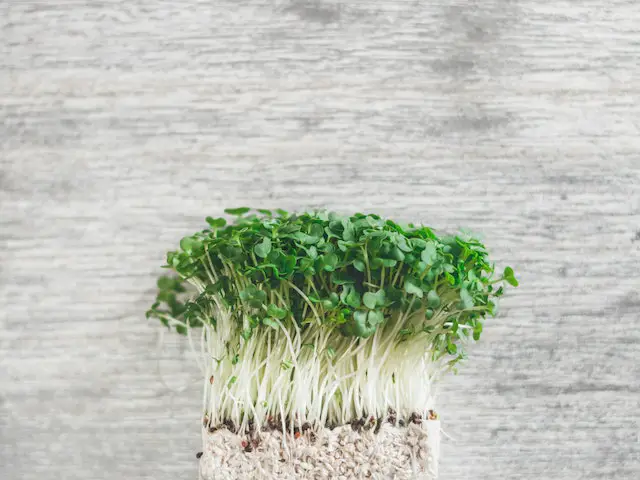Growing Monstera in water can be the perfect way to enjoy your plant if done properly. A fine Monstera in a transparent glass with clear water beside your work tools on your office cabinet sounds lovely, right? There’s no better way to display Monstera than a transparent jar with just water.
Before you go ahead to put this plant into the jar, there are things you must know. First, how long can they survive in the water? How often do you need to change this water to maintain the Monstera’s health?
Many people grow their Monstera from the seedling stage, but what if you could just cut the stem and grow it inside water without any soil? Of course, these things are beginning to sound like a lot, but it is pretty simple to carry out and have your water-grown Monstera.
Having a Monstera in water is a great way to keep the plant healthy, but it requires frequent monitoring of the water and the plant’s roots. Depending on the size of the pot and the environment, you may need to change the water daily or weekly to ensure the plant stays healthy
In reality, one of the most fantastic starter plants for learning how to grow cuttings in water is the Monstera, so there’s no need to be terrified of Monstera growing. Keep reading to the end to discover some tips for growing Monstera in water.
Easy Tips to Growing Monstera in Water

One of the most popular plants to grow in water is the Monstera. The parent Monstera typically reacts well to trim, and cuttings quickly develop roots in water.
So, Monstera cuttings make excellent gifts or even starting plants because they develop quickly. In addition, they rank among the more straightforward to grow large indoor plants.
It is simpler to nurture a Monstera from a cutting in water than to switch a plant from soil to only water. A cutting will readily take root, adapt to its new environment, and produce roots better suited for water.
However, a soil plant may experience shock when submerged in water, and rot can develop quickly if the soil isn’t completely removed. Therefore, the best course of action is to cut a Monstera plant from the ground, place the cutting in a large container of water, and it should take root.
This section will examine some easy steps to growing your Monstera in water.
1. Cut From the Node
It would be best if you located a node to cut a Monstera. Then, somewhere in the bottom, most parts of the stem will be a node, typically a swelling hump, and occasionally an aerial root is just beginning to emerge from it.
Another simple way to locate a node is at the intersection of two stems, where nodes typically appear.
Slice off a piece of skin a few inches below the node using kitchen shears or sharp scissors. Also, trim any more stems or coatings from growing leaves after collecting your trimming.
To avoid additional rotting, you should aim for one long stem and avoid any extra roots or leaves.
2. Insert in a Fine Transparent Jar

After air drying the stem for a few minutes, gently set them in a fine transparent jar and add water until it reaches the node by a few inches. As this increases the likelihood of rot, keep the cutting hanging away from the jar’s bottom or side.
The most desired vases are those with a broader base and a narrower mouth. This keeps the stem straight while giving the roots more room to spread out and thrive.
Put your jar somewhere bright and sunny. As you should already figure out, direct sunlight or a too hot environment will kill the plant. So to maintain everything healthy and in the best growing environment, you should top the water when it goes down or replace it when it is cloudy.
3. Take Care of the Grown Roots
When your beautiful Monstera has developed roots, you must ensure to clean the roots. So, watch the roots regularly as they grow and don’t hesitate to trim off anyone that seems unhealthy.
You can clip out roots that appear to be rotting as long as there are numerous healthy-looking roots. You identify these damaged roots by their mushy and slimy look. They are also primarily coloured black.
When your Monstera has grown enough roots, you can decide whether to transfer it to the soil or leave it in a bigger jar.
4. You Can Add Fertilizer

Although it’s not compulsory, your Monstera will grow quicker if you add fertilizer on a stipulated basis.
Regular houseplant fertilizer will not give the nutrients a Monstera growing in water needs. While houseplant fertilizer supplies nitrogen, phosphorus, and potassium, plants grown in soil have access to trace elements, and nutrients found only in soil.
All the nutrients your water-grown Monstera plant requires are in a well-diluted hydroponic fertilizer designed for plants grown in water.
Advantages of Growing Monstera in Water
Here are some beautiful and lovable things to note about Monstera in water.
1. It Is Less Messy
Making a plant mix or repotting won’t involve dealing with dirt. Furthermore, pets that dig won’t wreak havoc in your house.
Also, when it comes to transplanting, moving your Monstera plant to a larger water vase is easier than repotting it into a larger soil pot and less untidy.
2. Cheaper to Operate
As you must have figured out already, getting water for your plant is more accessible than buying soil, potting mix, or peat moss for soil planting.
3. Fewer or No Pest Worries
In particular, fungus gnats, which lay their eggs in the soil and spend their larval stage in the soil, will be less common when growing Monstera in water. Additionally, pests like scale and spider mites that cannot fly cannot infest your plants. Your plant becomes unreachable to pests.
4. Visible Roots

When grown in soil, Monstera plants are susceptible to root rot, especially when overwatered. In order to confirm, it is frequently necessary to remove them from the pot. When growing Monstera in water, the roots are visible, allowing you to keep an eye on them and see any issues as soon as they arise.
Downsides of Growing Monstera in Water
As we all know, everything with a good side also has some drawbacks, and Monstera is not left out. Despite the appealing and decorative look it adds to a room, there are some disadvantages to consider before growing Monstera in water.
First, you will have to struggle with its algae problem. Algae will surely accumulate in the water, and it can be difficult to remove it consistently. Also, the presence of algae will take away the beauty and attractiveness associated with Monstera in a transparent vase.
Secondly, staking Monstera can be an arduous task. This is because, unlike the soil, your staking pole may not get the needed support in water as when in soil.
Other downsides of growing Monstera in water include water pH and environmental change that may negatively affect your plant’s growth.
What Type of Water Can You Use for Growing Monstera?
Although it seems convenient to grow your monstera in any available water, it is not advisable. Rainwater is the best option to consider for growing your monstera. Avoid using tap water for the plant, as it contains chemicals that can cause damage.
If the only water available is tap water, put it in a container and leave it outside through the night. Doing this will allow some of its chemical components to evaporate, making it safe to use.
Naturally, rainwater contains certain nutrients that can benefit your monstera. Moreover, its nitrogen content can be easily absorbed by your plant.
How to Care for Your Water-Grown Monstera
After growing your monstera in water, it is important to take care of it for optimum growth. Follow these simple tips to achieve this:
- Place the plant in a spot with bright, indirect sunlight.
- Don’t expose the monstera to temperatures above 90 degrees Fahrenheit, as it can cause stress.
- Keep the plant’s humidity levels above 60%; consider using a humidifier when necessary.
- Apply a rich, liquid fertilizer to the water you use to grow the monstera.
- Change the water regularly and rinse the container to prevent the growth of bacteria on the plant roots.
Also read: Monstera Root Rot
Summary
Generally, Monstera is pretty to look at when in clear jars with water. They can survive in water without soil for an extended period, although you may need to take care of them to pay attention to their growth.
However, before you switch to growing Monstera in water rather than soil, you must consider its pros and cons and study the steps to propagating it, as mentioned above.
Frequently Asked Questions
Here are some questions often asked by other Monstera lovers.
Can a Monstera Grow in Just Water?
Yes! You can grow a Monstera in just water. You must frequently change the water when shady, clean the roots if you got it from the soil, add hydroponic fertilizer, and watch your Monstera grow.
Can I Put Monstera in Fish Tanks?
Of course, Monstera can grow well in fish tanks. They pose no toxic threat to the fish, and the two can do well together in one place.
How Long Can Monstera Live in Water?
If you take good care of a Monstera, it can live in water for an endless amount of time. We advise taking a cutting, putting it in water, and allowing it to grow for the best results. We advise topping the water once it goes down because too much change can cause the nutrients to go away.
However, you should replace the water once it becomes cloudy or shady because you’ll need to ensure that it always has fresh water.
Conclusion
Of course, it’s up to you whether or not you want to try growing a Monstera in water. The good thing about this is that it does not require much-specialized equipment, and the risk is minimal.
For a while, your Monstera cutting might thrive in water, but if it starts to appear sickly, you can shift it to the soil to see if that would help.
Monsteras are the ideal plant to play around with and experiment with growing in water indefinitely because they can survive many growing conditions and are typically inexpensive and simple to find.

Hey, I’m Lisa and I’ve been an avid gardener for over 30 years. I love writing, talking and living in the garden! Feel free to connect with me on my socials below

